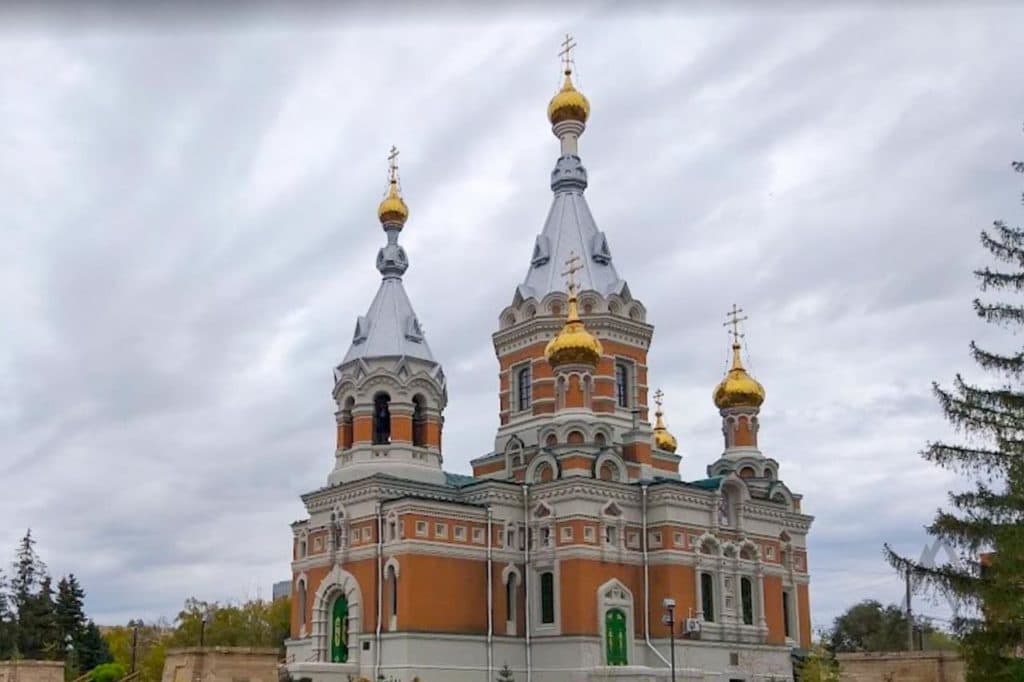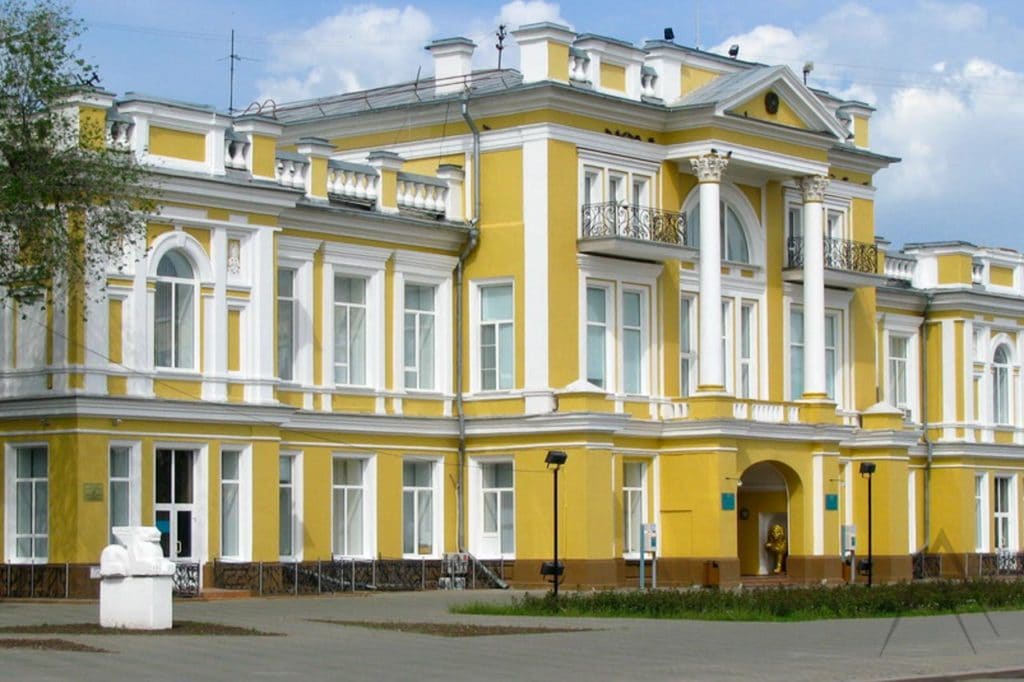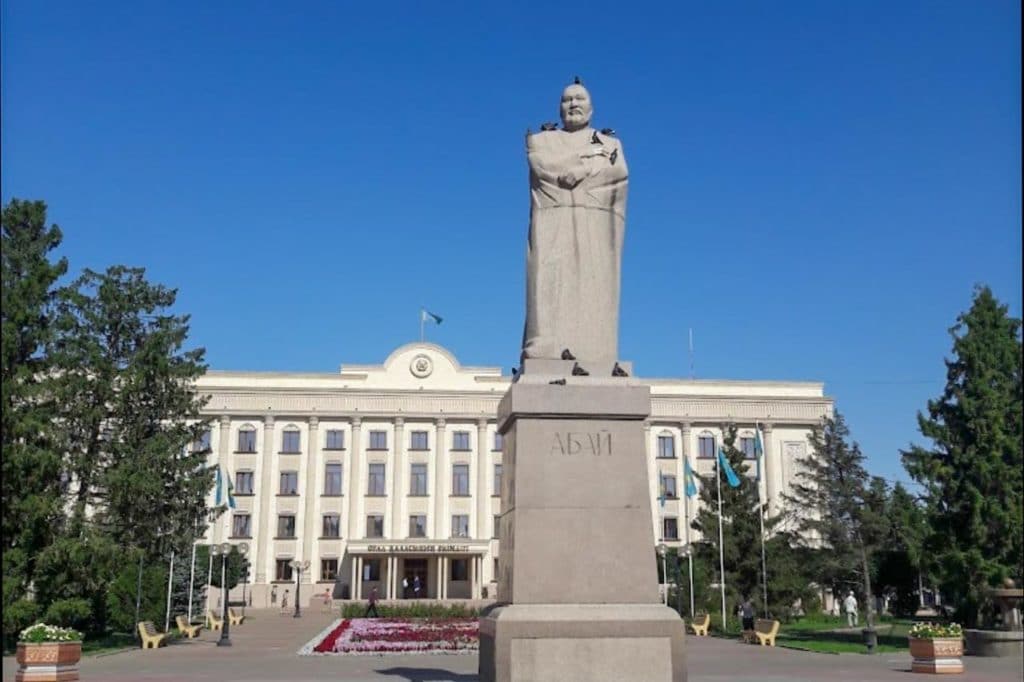Uralsk
Uralsk / Oral
Uralsk may sound first like a Russian city but it is a Kazakh city and it is called Oral in the Kazakh language. Sitting on the European bank of the Ural River, Uralsk is closer to Helsinki and Vienna than to Almaty. It is located at the far northwestern edge of Kazakhstan and has a population of about 260 000. Due to the location, Oral is the first or last city of Central Asia for several travelers.
Uralsk is proud of its history, mainly because the famous Russian writers like Pushkin, Krylov, Tolstoy and Sholokov spent their time here. But in addition to the previous, such Kazakh composers as Kurmangazy, Dauletkerey and Dina Nurpeissova all came from the Uralsk area. Established by Cossacks, Uralsk has its origins in Russia and it can be seen while walking in the city where one can observe magnificent buildings that have been preserved from the 18th and 19th centuries.
These include Archangel Michael Cathedral, the Church of the Redeemer, the Local History Museum in the building of the old Russo-Kazakh school, the Pugachev Museum with a display about the great Russian Peasants’ Revolt, and the historic building of the military academy. The main boulevard, Dostyk covers 6 km in north-south direction with two Russian Orthodox cathedrals. The bridges across the river here turn Oral into an important crossroad at the location that could also be imagined as a border between Europe and Asia.


Uralsk History
Uralsk is the oldest town in the current territory of Kazakhstan but the city has changed a lot recently. The city was originally built by Cossacks in 1584 at the junction of two rivers, the Ural’s the Yaik and the Chagan and it was originally named Yaitskiy Gorodok. A famous Russian servant revolutionist Pugachev started a rebellion carrying his name here and there is a museum dedicated to this as well. Pugachev was a Cossack leader who began a revolution against the autocratic Catherine the Great that spread to the Ural Mountains and along the Volga.
After the rebellion was extinguished and Pugachyov captured, he was held in Kunge in the south end of the town. Due to the Pugachev’s Rebellion, Empress Catherine the Great decided on the defeat of the rebellion that she would eliminate the name of Yaitskiy Gorodok from the map and with it the memory of Pugachev by renaming the city to Uralsk in 1775. With the new name, the town prospered as it expanded northwards from its original core and smart new brick buildings appeared.
During the Russian Civil War, the commander of Red Army Vasily Chapaev was killed south of town while attempting to swim across the Ural River to escape the White Army forces. The settlement is now renamed Chapaev in his honor. During WW2 several industrial enterprises, such as the Zenit weapons factory from Leningrad, were relocated in Uralsk. Later in the 1970s the discovery of the major oil and gas boosted the economic development of Uralsk and its surrounding region. After Independence in 1992, the city got its new Kazakh name Oral, but it is still more known as Uralsk.


What to see in Uralsk
Dostuk Avenue is the heart of Uralsk and the majority sights are located close to it. You can start from the southern end of the town where Kureni is located at the confluence of the Chagan and Ural rivers where the Cossack settlement was originally born with single store houses decorated with wooden shutters. Moving northwards through this district along Dostyk Avenue, at the junction with Stremyannaya Street, there is a log-walled building containing the House Museum of Yemelyan Pugachev.
Proceeding northwards along Dostyk Avenue, you can soon reach a creamy green-walled Cathendral of Archangel Mickhail completed in 1751 and one of the oldest buildings in Uralsk still standing. In the same area on the central part of Uralsk, there is a “golden” church, the Cathedral of Christ the Savior, which construction began in 1891 under Nicholai the Second in honor of three hundred years of service of the Ural Cossacks to the royal family. Closer in the Abai Square is a regional Akimat building and in the corner of it placed Kazakh Drama Theatre.
Uralsk Museums
House Museum of Yemelyan Pugachev
As mentioned, Yemelyan Pugachev led a major revolution against the rule of Catherine the Great. He was in the Russian army and served in the Seven Years War and first Russo-Turkish War, but left during a leave of absence. Consequently he led and nomadic life and came to express ideas of rebellion against the depredations of Tsarist rule. He organised revolution among the Yaitsk Cossacks, divided into ‘loyalist’ and ‘rebellious’ factions and devised a plan to organize them into Cossack regiments.
His supporters included many Tatars and Bashkirs as well as Cossacks and his forces reached a number of more than 10 000, their organisation mimicking the Tsarist one in some respects. One small room museum holds chronicles the history of the Pugachev Rebellion. Apart from the knives and basic weapons. there is the throne Pugachev used is on display. If you are interested in Russian history of tsars time the museum will be interesting for you.
- Entrance fee: 150 tenge, with excursion 600 tenge
- Address: Dostyk-Druzhby Avenue 35, Uralsk, Kazakhstan
- Working hours: Tue-Fri 10.00 - 18.00
Uralsk Pushkin Museum
The famous Russian poet arrived to Uralsk 21 of September in 1833 while carrying out his research about the Pugachev Rebellion. He came with his friend lexicographer Vladimir Dal. In one of his letters he mentioned that they were warmly greeted by the Ataman of the Cossack Host. Pushkin stayed the Ataman House during his time in Uralsk.
There are also reports of other Russian literary figures having visited Uralsk and many of whom also stayed in the Ataman House, amongst them Leo Tolstoy and the poet Vasily Zhukovsky. Revered visitors also cover Kazakh writers including Abai and Shakarim, who translated Pushkin’s poetry into the Kazakh language.
As the result of Pushkin’s research was the Pushkin’s History of the Pugachev Rebellion and the historical novel The Captain’s Daughter, published in 1836. The Ataman house was turned into the museum in 2006 while president Putin of Russia visited Uralsk.
- Entrance fee:
- Address: Dostyk 168, corner with Savichev street, Uralsk, Kazakhstan
- Working hours:

Uralsk Regional History Museum
West Kazakhstan Regional Museum of History and Local Lore is a two-story Tsarist-era building located opposite the Kazakh Drama Theatre on Dostyk Avenue and the most common image from Uralsk. Originally the building was built in 1879 to house a Russian-Kazakh school but today it houses the West Kazakhstan Regional Museum of History and Local Lore.
The museum exhibits start with archaeology, including Stone Age implements found near Lake Shalkar and some ceramic and bronze items unearthed from the Iron Age burial mounds at Kyrkoba, some 80 km east of Uralsk.
There are also some machine guns from the 20th century WW2. After comes a room dedicated to local cultural figures, including writers and actresses and a room devoted to musicians. The museum also covers the post-independence Kazakhstan, includes photographs of President Nazarbaev visiting the region and the white plastic helmet worn by the president during a visit to the Karachaganak field, which Nazarbaev has signed and dated.

Manshuk Mametova Museum
This museum is devoted to a female machine gunner in the WW2, called Manshuk Mametova and it is located in the house where she lived. Mametova was the first Soviet Asian woman to receive the award of Hero of the Soviet Union. Manshuk was born in Orda in the westernmost part of the region then was adopted by the childless Ahmet Mametov and his wife Amina. The Mametov family lived in this house from 1932 until 1934, before moving to Almaty where Ahmet, a doctor, fell victim to Stalinist repression and was shot in 1938.
In a similar way as Aliya Moldagulova from Aktobe, a female Heroe of the Soviet Union, Manshuk also suffered brutally in childhood from the Soviet regime. Manshuk was studying in the medical institute in Almaty at the outbreak of war. She joined the 100th Kazakh Brigade and served as a radio operator and then nurse before becoming a machine gunner, dying bravely in battle in Pskov Region on 15 October 1943. The museum presents a touching selection of Manshuk’s possessions that are a gift to the museum from her mother Amina.
Behind the house there is a modern brick building, built in the early 1990s, which contains a diorama showing Manshuk’s last battle for the town of Nevel in October 1943, with the brave and resolute Manshuk standing firm at her machine gun while German tanks and troops advance towards her. The birch trees on the grounds of the building were brought from Nevel.
Around Uralsk
Darinskoe (Дарьинское)
32 km to the northwest from Uralsk situated a village Darinskoe, where is located in the museum of Mikhail Sholokhov museum. He was a Soviet novelist born in 1905 in the Veshenskaya Stanitsa, the heartland of the Don Cossacks, although he was not himself a Cossack. His great work, started late in 1925 and completed some 14 years later, was The Quiet Don, an epic novel about the lives of the Don Cossacks from around 1912 to 1920. He was awarded the Nobel Prize in Literature in 1965.
He accompanied Khrushchev on a trip to the United States in 1959 and became a member of the Central Committee of the Communist Party in 1961. The museum was opened in 1979, in the house in which he and his family had lived. This is a modest single-story dwelling, dwarfed by the two-story museum extension. The family house includes many belongings linked with Sholokhov.
Lake Shalkar
Shalkar is a salty and egg-shaped lake located in 75 km south from Uralsk. The lake is about 18 km long and 14 km wide according to some scientists the lake may be relict of an ancient sea. The lake is surrounded by pure nature: salt marshes stretch on one side, endless steppes on the other, Sasay and Santas mountains rise in the south and north. Due to the salinity of the water and the large size, Shalkar is often called the steppe sea.
You can also observe migratory birds here. The southern beach of the lake is sandy therefore it is popular within Uralsk residents and Russian tourists from the nearest cities. Besides, on the same side of the lake located in a village Saryumir there, you can find a place to overnight.
Travel to Uralsk
Uralsk by Plane
You can get to the Urals from Astana and Almaty by Air Astana Airlines, they have daily flights as well as from SCAT Airlines operate daily from Aktau and Atyrau to Uralsk.
Uralsk airport located 15 km out of the town. Unfortunately, there is no public transportation operating from the city to the airport so the taxi is the only option. We advise you to book in advance as on the arrival the taxi drivers charge double.
Uralsk by Train
From the Russian cities Moscow to Uralsk (30h), Saratov (10h). From the Kazakhstan cities: Aktobe to Uralsk (6-10h), Astana (25-35h) Almaty (52h). The timetable you can check from the website.
The Uralsk railway lies in the north corner of the city center at the northern end of Zhukov street. There are fast trains a bit higher price and slow trains at a lower rate.
Uralsk by Bus / Taxi
And last but not least are the long distance buses. They are less comfortable, but usually the cheapest way to get to Uralsk
Uralsk bus station is located east of the center along Syrym Datuly street. There are daily busses operates to Atrau, five days a week to Saratov, Russia and Orenburg, Russia as well as to Aktobe. There are also busses serving within the region, to Darinskie five days a week and Chapaev.
Other sights near Uralsk
Page updated 26.3.2022